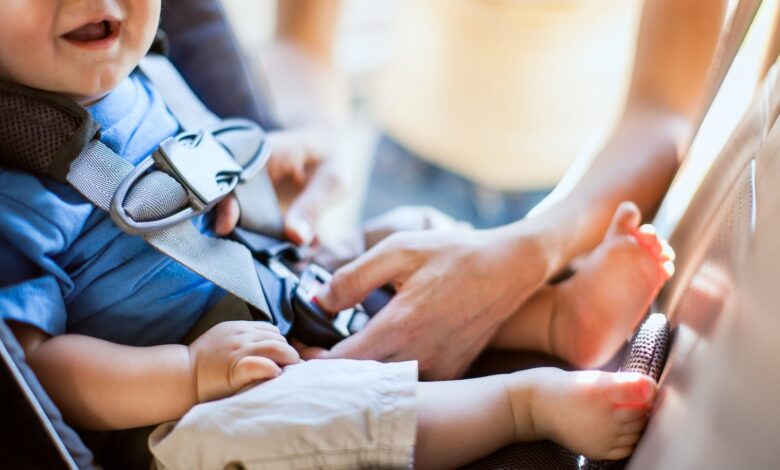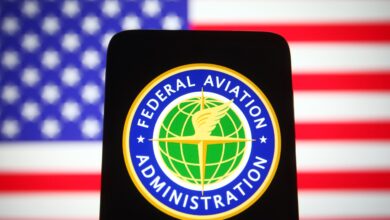Car seats that are airline approved

If you’re a parent and fly with your family, you know that air travel with kids is not always easy, especially when it involves lugging a car seat.
Car seats can be big, bulky and heavy. However, they’re also necessary at times to ensure a safe trip. In addition to the safety issues, some little kids sleep better on a plane when they are cozy in their car seats at 36,000 feet.
You also probably know that children under age 2 can fly for free as a lap child on a paid adult ticket. Once that child turns 2, though, your days of flying a child for free are over.
Though they may be too old to fly for free, they’re still too young to sit in a regular airplane seat without an approved car seat, regulated by both the Federal Aviation Administration and airlines, which allow you to check car seats (and strollers) for free without counting against your baggage allowance.
This guide details carrier car seat policies. Some car seats may not be permitted onboard due to cabin class, seat width, placement or seat direction/angle.
To help traveling parents navigate these rules, refer to this guide to know what is and isn’t allowed regarding car seats and bassinets on 23 major airlines.
Domestic airlines policies
While the FAA does not require car seats, they restrict what type of car seats you can use on a plane. It suggests using a Child Aviation Restraint System, which includes typical car seats or Aviation Child Safety Devices (ACSD), specifically the AmSafe CARES Restraint, as an alternative to a car seat.
ACSDs are designed for children weighing between 22 and 44 pounds and under 40 inches tall.
Vest and harness-type child restraint devices other than the FAA-approved CARES restraint device are generally prohibited onboard, and booster seat policies vary.
Sign up for our daily newsletter
To use your car seat onboard, it must have two labels:
- “This restraint system conforms to all applicable federal motor vehicle safety standards.”
- “This restraint is certified for use in motor vehicles and aircraft.”
In addition to those manufactured in the U.S., these airlines will accept car seats approved by foreign governments or the United Nations.
“If your seat has been approved for aircraft use, there will be a sticker (either on the back, bottom or side of the seat, depending on the size of the label) that says ‘This restraint has been certified for use in motor vehicles and aircraft’ in red lettering,” Graco says on its website. “However, even though the seat is FAA approved when used according to the manufacturer’s instructions, we recommend calling the airline you are traveling with ahead of time as each airline has its own policies.”
This is because some of the bases on infant car seats do not meet FAA standards or individual airline policies.
“The bases that are not approved will have a clearly marked sticker on the base,” according to Graco. “Even if the base is not cleared for use, most of these infant car seats can still be installed shell only, please refer to the instruction manual for specific information about your infant car seat.”
Based on the policies outlined below, most car seats will fit in the smallest airplane seat if they measure 16.3 inches or less. However, certain cabins may accommodate wider passenger seats and, thus, car seats.
Overall, most airlines prohibit child-restraint systems in aisle seats, emergency exit row seats and on either side of an exit row, with window seats preferred, with some exceptions. Additionally, children under the age of 2 cannot sit in a seat equipped with an airbag seat belt per federal regulations.
Airlines also specify other restrictions for child safety seats, detailed below by U.S. carriers.
Alaska Airlines
Alaska Airlines prohibits child-restraint systems in A seats in rows 1 through 4 on flights on E-175 planes.
“The window seat is the best location for a child restraint system, although it may be placed in the middle seat if the window seat is vacant or if the restraint system does not block access to the aisle,” the airline says. “If you are uncertain, the flight attendant can assist in determining if the middle seat is acceptable.”
Alaska also provides a chart to help flyers determine whether a specific car seat will fit in specific aircraft.
Alaska Airlines does not offer bassinets on any of its flights.
For more info, see Alaska’s traveling with infants and children policy.
American Airlines
American Airlines says most safety seats approved for use in motor vehicles are also acceptable onboard, as long as it has a solid back and seat and restraint straps to securely hold the child.
Child-restraint systems are not allowed in first or business class on select planes, specifically first class in Airbus 321-T and business class on Boeing 777-200, Boeing 777-300, Boeing 787-800 and Boeing 787-900.
To use an infant bassinet, your child must be under 2 years old and 20 pounds. Bassinets are available on a first-come, first-served basis at the gate for economy travel only on 767-300, 777-200, 777-300 and 787 aircraft.
For more info, see American’s traveling with children policy.
Delta Air Lines
Beyond the usual seat restrictions for safety seats, Delta also tells passengers with car seats to avoid bulkhead seats when the safety seat is a combination car seat and stroller, plus Delta One lie-flat seats on A330-200, A330-300, Boeing 777, 767 or 747 aircraft.
Delta offers onboard baby bassinets on some international flights for babies weighing up to 20 pounds and up to 26 inches long.
Onboard bassinets, also known as SkyCots, are free for passengers in select seats on equipped aircraft for some international flights and can be requested by contacting Reservations before arriving at the airport and then speaking with the gate agent at the boarding gate, but cannot be guaranteed.
For more info, see Delta’s infant air travel policy.
Frontier Airlines
Like the non-low-cost carriers, Frontier seat width varies based on aircraft, with minimum seat width ranging from 16.5 inches to 17.4 inches for the A—321 and A—319/A—320, respectively.
Booster seats are allowed onboard Frontier flights but may not be used during takeoff and landing.
Frontier Airlines does not offer bassinets on any of its flights.
For more info, see their traveling with children or pets policy.
Hawaiian Airlines
Like some of the other airlines on this list, Hawaiian Airlines provides travelers with a handy chart with seat width and configuration on aircraft to determine whether your car seat meets the narrowest and widest passenger seats on board.
Contact Hawaiian Airlines Reservations in advance if you plan to use a rear-facing car seat.
Bassinets are available on most Hawaiian Airlines’ international flights. To reserve a bassinet, the accompanying adult must purchase a bassinet-compatible Extra Comfort seat in Row 14 (14 AB, CD or EG, HJ).
If you prefer not to purchase an Extra Comfort seat, you may see an airport customer service agent at check-in for bassinet availability. If available, Hawaiian Airlines will accept up to two requests per flight. Confirmed bassinets will be assigned during the boarding process. Priority will be given to the customer with the earliest check-in time as the bassinets are not guaranteed.
To use a bassinet, your child must be under the age of 2 and weigh under 20 pounds. The bassinet is 32 inches long, 14.5 inches wide and 7 inches tall.
For more info, see Hawaiian’s traveling with a child policy.
JetBlue Airways
In addition to providing a seat dimension chart, JetBlue does not require infant or children travelers to have a car seat “as long as they can sit upright unassisted.”
JetBlue does not offer bassinets on any of its flights.
For more, see their traveling with kids policy.
Southwest Airlines
Unlike the other carriers, Southwest allows car seats in middle seats, assuming it does not impede the window seat passenger’s path to the aisle.
While Southwest recommends travelers less than 20 pounds face the back of the plane and those between 20 and 40 pounds face forward, “parents have ultimate discretion.”
Southwest does not offer bassinets on any of its flights.
For more info, read Southwest’s traveling with little ones policy.
Spirit Airlines
Diverging from the other airlines in this guide, Spirit Airlines does not prohibit car seats in aisle seats, according to its website.
Frontier Airlines
Though Frontier outlines seat dimensions, it promises to “do our best to reseat you to an open seat (not including our Big Front Seats) if the car seat is too large for a regular seat.”
Rear-facing child restraint systems may not fit on Frontier aircraft if taller than 25 inches.
For more info, read Frontier’s FAQ online.
United Airlines
Aligning with FAA policy, United allows car seats made after 1985 with a certification sticker onboard, in window seats only, while prohibiting booster seats and harnesses.
United has a limited number of complimentary bassinets for use on international aircraft only, large enough to hold an infant weighing less than 22 pounds.
Bassinets are available for customers traveling international segments in Polaris business class on select 757, 767, 777 and 787 aircraft and in United Economy on 757, 767, 777 and 787 aircraft.
Customers can request a bassinet by calling the United Customer Contact Center within the United States or the appropriate Worldwide Contact Center. Bassinet availability is limited, and these arrangements are not guaranteed, so request a bassinet early.
For more info, see United’s traveling with children policy.
International airline car seat policies
Aeromexico
Car seats certified for use in motor vehicles and airplanes are permitted onboard Aeromexico aircraft in the window or middle seat.
A limited number of complimentary cribs are available upon request and are subject to availability for passengers weighing less than 24 pounds. Availability is confirmed during the check-in process, crib availability will be confirmed, and you must purchase an AM Plus seat to accompany it.
For more info, see Aeromexico’s information for passengers traveling with infants.
Air France
Air France restricts car seats for passengers under 2 to ones smaller than 17 inches wide, excluding first-row economy, which are smaller (16 inches).
During takeoff and landing, the car seat can face the back of the aircraft, but the car seat must otherwise face the front of the aircraft so the seat in front can be reclined.
Car seats are not allowed on certain Boeing 777 aircraft and all Boeing 787 aircraft or the La Premiere cabin on all types of aircraft, in which you must carry your child on your lap.
Air France passengers may request a bassinet on long-haul flights in business, premium economy and economy cabins, subject to availability, for travelers weighing less than 22 pounds and measuring less than 27 inches.
For more info, read Air France’s families and children policy.
Air New Zealand
Passengers can use forward- or rear-facing car seats to restrain children up to 7 years old as long as the seat is designed for the child’s weight, equipped with a built-in restraint system, not wider than 17 inches nor higher than 19 inches for rear-facing or 25.5 inches for forward-facing.
Car seats should also display one of the manufacturing standards marks showing that it is an approved car seat that is outlined on the Air New Zealand website.
Car seats cannot be used in Business Premier lie-flat seats on all 777 aircraft.
On international flights, Boeing 777-200, 777-300, and 787-9 aircraft may offer seats with bassinets for infants up to 8 months old and 26 pounds and include sheets, a pillow and blankets. When booking a bassinet online, select a seat with a bassinet icon from the bassinet row. If you are traveling with an infant between 8 and 15 months who meets the aforementioned weight requirements, you may be able to secure a bassinet seat when you check in.
For more info, see Air New Zealand’s traveling with children policy.
British Airways
You can bring your own car seat on British Airways flights, subject to certain conditions, including that it be no wider than 18 inches to ensure it fits in the aircraft seat. The car seat frame must be either metal or plastic/polycarbonate material and ideally placedFl in the middle seat, among other conditions.
You can also reserve a child seat supplied by British Airways, suitable for babies weighing less than 27.5 pounds, available on all long-haul flights except on the London City Aiport (LCY) to John F. Kennedy International Airport (JFK) service. These are also the only child seats that can be used in Club Suite.
Alternatively, if you have your own AmSafe Child Restraint System, you can use this on board in economy seats for infants aged one to four for all other cabins.
British Airways has specially designed carrycots on board that can be reserved during booking. The carrycot guidelines are the same as reserving a carrycot position if you use a car seat supplied by British Airways.
For more info, read the airline’s family travel policy.
Cathay Pacific
If you have travelers between the ages of 6 months and 3 years, you can bring your own car safety seat on board as long as they meet certain conditions, including both forward- and rear-facing, pending they don’t impact other passengers’ comfort.
ACARES harnesses can be used for children under three and less than one meter tall, weighing between 22 pounds and 44 pounds.
Cathay Pacific restricts safety seats on certain aircraft and cabins, outlined online.
Alternatively, Cathay Pacific offers its own child restraint seats for the same age group. A limited number of child restraint seats are available for passengers under 39 inches tall and 44 pounds.
Bassinets are available on all Cathay Pacific flights for passengers under 6 months old and under 26.5 pounds, excluding Cathay Dragon flights operated on Airbus A320 aircraft. You can ask for a baby bassinet when you make your reservation.
For more info, read the airline’s traveling with children policy.
Emirates
Emirates provides a list of acceptable car seats for use by passengers online and says that travelers under 22 pounds can be either forward-facing or rear-facing but that those weighing more must be forward-facing. All car seats must be secured using the lap seat belt — not those that need to be secured by a three-point seat belt or shoulder harness.
You can request a baby bassinet in the “Passenger details” section when booking online or under “Manage your booking” or by phone.
Bassinets, which are subject to availability, measure approximately 29.5 by 13 by 8.8 inches and can hold babies weighing up to 24.2 pounds. These are designed for babies up to 2 years.
For more info, see Emirates’ frequently asked questions.
Etihad
Children up to age 3 may use certain approved car seats in conjunction with an aircraft seat, with rear-facing seats restricted to infants from ages 0 to 6 months weighing less than 22 pounds and are only allowed in first or business class.
Bassinets on Etihad are specially designed carry-cots to help your baby sleep flat during the flight. If you’re traveling with an infant under 11 kilograms (about 24 pounds), you can request a baby bassinet when you book your flight. Supplies are limited and allocated on a first-come, first-served basis.
For more info, see Etihad’s flying with children and infants policy.
EVA Air
EVA Air does not specify car seat restrictions beyond prohibition in its business-class cabins.
Baby bassinets are available aboard all EVA Air aircraft, designed for infants up to 8 months, free of charge. Height and weight limitations apply.
When you make your reservation, you must advise the airline of your baby’s date of birth, height and weight.
For more info, contact EVA Air’s reservations team or visit the airline’s website.
Japan Airlines
Japan Airlines provides two options for travelers — you can bring your own child seat or rent one through the airline.
To use your own seat on board, it must satisfy specific standards, including that it measures less than 42 centimeters wide. If you prefer to rent one, contact the reservations center at least 96 hours before departure. These seats are limited, so make sure to book early.
Bassinets on Japan Airlines are ideal for infants up to age 2, weighing up to 22 pounds and measuring 28 inches tall. The bassinets are 12 inches wide and 6 inches deep.
For more info, read the airline’s policy on using a child seat onboard aircraft.
KLM
If you book a seat for your child, KLM recommends bringing a car seat on board that fits between the armrests of the aircraft seat, which is 16.5 inches wide. During takeoff and landing, seats may be rear-facing but must be forward-facing at cruising altitude.
You will need to reserve the use of a car/child seat in advance with the airline.
For intercontinental KLM flights, you can reserve onboard carrycots via “My Trip” or by contacting the KLM Customer Contact Centre. These cots are suitable for babies shorter than 25.5 inches and weighing less than 22 pounds. Availability is not guaranteed.
For more info, read KLM’s policy on travel documents for kids.
Lufthansa
Lufthansa encourages car seats for travelers up to age 7, though they’re entirely voluntary. A list of approved car seats on Lufthansa flights is available online.
For long-haul flights, the airline has special carrycots for babies under 24 pounds and under 26 inches. These are limited per flight and can be reserved up to 52 hours before departure.
Depending on your booking class, you may be charged an additional fee.
For more info, read Lufthansa’s child restraint systems policy.
Malaysia Airlines
Malaysia Airlines does not provide onboard car seat guidelines but does provide a select number of bassinets on board, depending on the aircraft. Passengers must reserve bassinets at least 24 hours before departure.
For more info, read the airline’s articles regarding children onboard.
Qantas
Child car seats can be carried on board most Qantas and QantasLink flights and secured to an aircraft seat if approved by Qantas before travel. Qantas recommends contacting them at least seven days before travel, as preapproval must be finalized at least 24 hours before departure.
You’ll also need to show your device to our airport staff on the day of travel, including at check-in.
Qantas specifies guidelines for onboard car seats, including that they are only used on certain seats based on aircraft type. They also can’t be located in an aisle seat or in an exit row. If two responsible adults are traveling with a child and the allocated child car seat is in the center aisle, the two responsible adults must be seated on either side adjacent to the child car seat.
The airline provides bassinets onboard (approximately 28 inches long, 12 inches wide and 10 inches deep) for babies weighing under 24 pounds. These are limited, so make sure to request one during booking.
For more info, read Qantas’ child car seat policy.
Singapore Airlines
Singapore Airlines allows the use of approved car-type child safety seats and FAA-approved child harnesses for children under age 3. Seats must be forward- or aft-facing while meeting specific size dimensions within each cabin class, outlined online.
The airline asks passengers to request a bassinet when they book an infant ticket, as only a limited number of bassinets are available on board, on a first-come, first-served basis. Each bassinet measures 30 inches by 11.7 inches by 6 inches supporting a maximum weight of 30 pounds.
For more info, read Singapore’ traveling with children policy.
SWISS
You can take your child’s car seat on Swiss aircraft if your child is under 12 and weighs less than 59 pounds. For infants, you must book a separate passenger seat, and car seats must be certified for use in aircraft and must fit on a SWISS seat (17 by 17 inches).
Baby bassinets are available in all flight classes on long-haul flights and in business class on European routes for babies up to 8 months old and weighing a maximum of 11 kilograms (about 24 pounds). The number of cots is limited, so please be sure to contact the airline ahead of time.
For more info, read the airline’s on board with children policy.
Bottom line
Knowing the rules for your particular airline ahead of time can save you aggravation before and after stepping onto your plane.
For domestic travel, an FAA-approved car seat does not guarantee that it will fit on board, so be sure to double-check the seat dimensions of your specific aircraft before lugging your car seat to the airport.
Whether you’re flying abroad or within the U.S., airlines require that your car seats meet standards of international governing bodies, including the FAA, European Aviation Safety Agency (EASA), European Safety Standard requirements and United States Federal Motor Vehicle Safety Standard.
As illustrated throughout this guide, most airlines specify height, weight and age restrictions for passengers using car seats.
Using a car seat for little passengers on board remains optional, but it must meet specified requirements if you do so.
For more info on traveling with your family, read:
Additional reporting by Jennifer Yellin.




